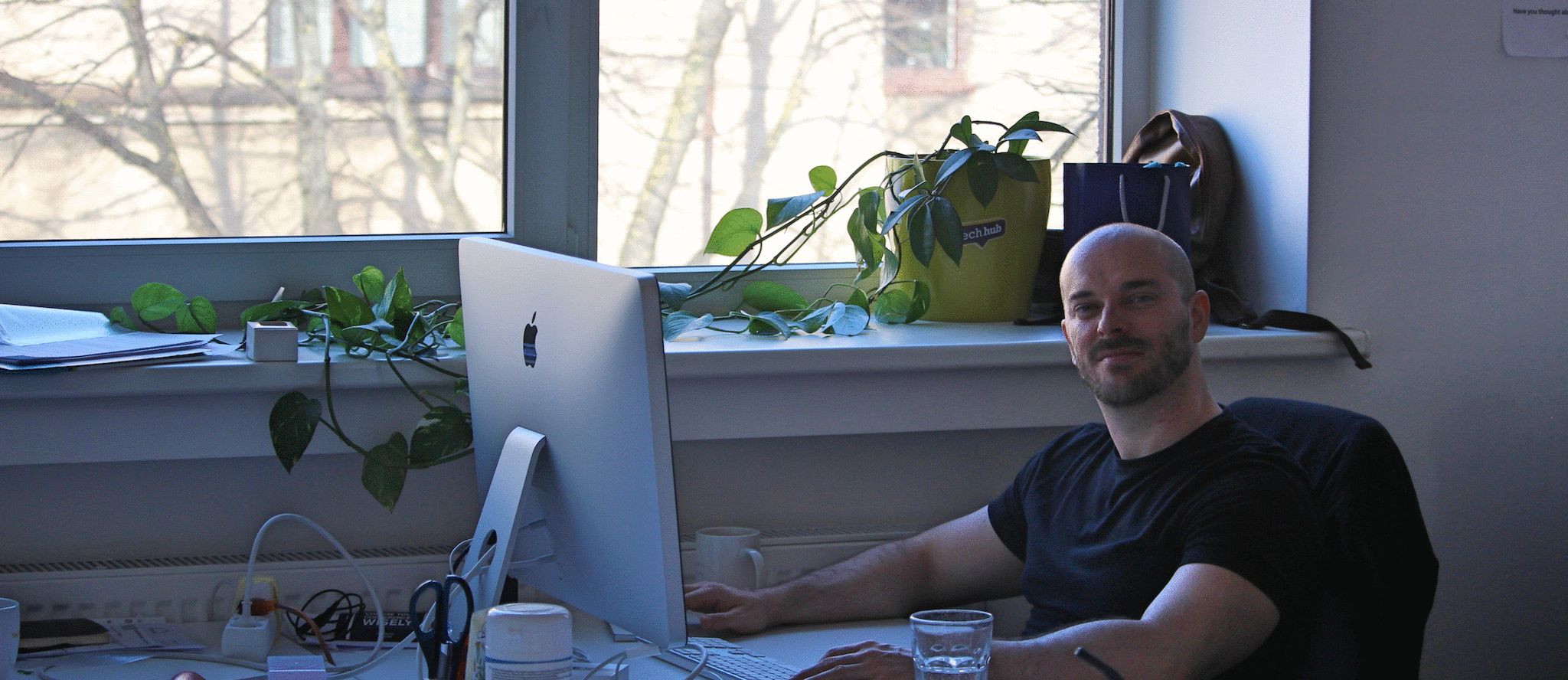How To Transition From Employee To Digital Nomad

Some years ago, I worked at a cubicle from 8am to 6pm, 5 days a week. I felt miserable. One day, I decided to quit my job and start freelancing. Eventually, I became a micropreneur and began traveling the world. In this post, I want to share my experience on how to transition from employee to digital nomad.
Cubicle Rat
At the beginning of this decade, I was working at a cubicle in Madrid. I had a steady, well paid job. Big car, big house, and a big TV in front of my big couch.
However, I hated my life. Every morning, upon waking up, my first thought was: “Gosh! Do I really have to go there again?”.
My job was a sequence of grey, uncreative, repetitive tasks. I felt I was not learning anything new or growing as a professional. Apart from that, I felt trapped in the same city, day after day. During the winter, I would get to my job before dawn and leave after the sunset, thus, not seeing the sunlight for weeks.
How I Transitioned From Employee To Digital Nomad
Such a pretty house
And such a pretty garden
— Radiohead, “No Surprises”
One day, I decided that enough was enough. I quit my job and started freelancing. In retrospect, that was probably the best decision of my life.
Soon enough, I realized that not only I was able to work at my own pace, on the stuff I loved, but that I could also work from anywhere. All I needed was my laptop.
That realization was shocking. There’s a whole world out there to discover. I asked myself: “Do I really want to spend the rest of my life living in the same city?”. Besides, why paying 1250€ a month for a tatty apartment in Madrid when I could live in Berlin, Chiang Mai or Riga?
By the time, my partner and I had companies in Spain. We were working around the clock, paying a lot in taxes, and fighting an obsolete business system rooted in the past. We had the feeling of living to work instead of working to live.
Thus, we decided to leave Spain and become digital nomads, working remotely. The only loose end was finding a framework to conduct our businesses while traveling the world. Then, I discovered the e-Residency program, allowing us to found a company in Estonia and manage it remotely from any place in the world.
We sold all our stuff, decluttered our lives, and packed our bags… Since then, we’ve been living as digital nomads.

What’s A -Real- Digital Nomad?
If you google “digital nomad”, you’ll see lots of pics of young teenagers on a hammock in some tropical beach, probably with a macbook on their laps, pretending to be working.
That’s bullshit.
Trust me, at 34 ºC, sweating, sunglasses on, and directly under the sun, you are not going to get a lot of things done. That false image has been broadcasted over and over the internet because it sells. There’s a plethora of instagrammers trying to make a living by posting pictures of themselves surfing in exotic locations. Or bloggers writing about which islands have the best beaches in Thailand.
None of the digital nomads I’ve met are like that. They are hard-working people, that need to take care of their businesses every day. You’ll be surprised to know that the vast majority of digital nomads are in their thirties to late forties.
Does that mean that there are no digital nomads in Thailand? Of course there are, but you’ll most probably find them at a co-working center in Chiang Mai that at Ko Phangan.
Does that mean we don’t go to tropical, exotic beaches? Of course we do. But I’ve never carried my laptop to one of them. I go to the beach on weekends or holidays, like most folks out there.
Digital nomads in Thailand or Bali are not there mainly because it’s a sunny paradise. They are there because the cost of living is very low. Other aspects, like amazing ocean views, or getting to know new cultures may also be important, of course.
Advantages And Disadvantages Of Becoming A Digital Nomad
Going from employee to digital nomad is a big change in your life. If I had to choose one word to describe it, I would pick freedom. Freedom to roam wherever I want to, freedom from traffic jams, from the boss, from the mortgage. Freedom to enjoy a winter day if suddenly the sun comes out…
Not having a pile of stuff to worry about is also liberating. When you declutter your life of all your superfluous belongings, you leave room for your real life, and discover that, indeed, less is more. You learn that most of what you owned was not adding anything to your life.
However, it’s not a lifestyle for everyone. You will have to work weekends or nights sometimes, and be ready to do sacrifices. You are now your own boss, and the owner of your life. That’s a big responsibility.
Yes, it might be hard sometimes, but it’s so extremely rewarding, that in my opinion it’s worth it. I have gone through good and bad times since I took the leap, but haven’t repented once.
Steps To Transition From Employee To Digital Nomad
Ok, so you have decided that you want to go from employee to digital nomad, leaving your cubicle behind. Where do you start?
This is not something that happens overnight. Just like a successful business, it’s usually seen as an event, when in reality it’s a process. In my case, it took me some years. However, I want to share what’s the best and safest way, in my opinion, of becoming location independent.
Thus, don’t take this as a to-do list or a fixed sequence of steps. It’s just a general path that will take you there. As with everything in life, it’s our small decisions everyday that shape our future.
Find Something You Can Sell
First and foremost, you need to find something you can do to earn money. Something people are willing to pay you for.
Not everything works. It has to be a job you can comfortably do with nothing more than your laptop or tablet. Ideally, it’s something you’re good at, and most importantly, it needs to be something you love and enjoy doing.
Basically most digital jobs fall into this category. Programming, design, consulting, marketing, sales, writing, translation services, virtual assistant services, or even starting an online business… the possibilities are endless.
If you find something you are really passionate about, and you can sell that something to others while on the road… You are on the right track.
Get Some Customers
Next, you need to get some customers. Going from employee to digital nomad is hard at first. Suddenly, it’s all up to you. You need to build a professional portfolio and take it out there, promote your services, develop an online presence… and land some clients.
In order to do it, you will need to do a lot of stuff you ignored before. Stuff you probably don’t like or understand, like marketing, managing your business, keeping in touch with your current customers, taxes, etc…
It all looks overwhelming at first. However, one day you land your first customer, then another, and then another one… Eventually, you will gather a good portfolio of customers that will allow you to quit your job, if you haven’t already.
Quit Your Job
To be honest here, I didn’t wait to have a customer base before quitting my job. It was sucking the life out of me, so I took a leap of faith. I was confident in my developer skills, and I knew I would be able to get clients if I worked hard enough. I also had a good online portfolio and my blog, who had brought me one or two job offers.
It took me some months to land my first contract but, when it finally happened, the feeling was awesome. It’s something that boosts your self-confidence, and makes you grow both as a person and as a professional.
Your situation might be different from mine. You can have more or less savings -I actually had none-, but don’t wait too long. There’s never going to be the right time. You are never going to feel confident or secure enough. So stop hesitating and just do it.

Start A Company That Allows You To Work Remotely
Next, you need to have the right legal framework for your business while you travel around. Back in Spain, my business was trapped by my Spanish company. Lots of red tape, an obsolete administration, the obscure tax system… It was a nightmare.
It was clear to me that I would not be able to conduct my business remotely with a company in Spain.
Luckily, we discovered the e-Residency program, and opened our companies in Estonia. That was a game changer for us. It’s not a coincidence that many digital nomads end up becoming e-Residents. Being able to manage your company completely online is one of the things that has made Estonia become the most digitally advanced country in the world.
I would recommend any aspiring or seasoned digital nomad to open their companies in Estonia. You will have a reputed, European company in a country that understands that, as a digital nomad, your lifestyle involves traveling the world on a regular basis.
Declutter Your Life
Becoming a digital nomad means traveling with the stuff that fits your suitcase. We are not aware of how many things we accumulate throughout the years until we need to get rid of them.
This is probably the hardest step in my opinion. After a whole life piling up material possessions, you’ll need to do a deep analysis of what’s truly important in your life. You will need to get rid of a lot of stuff. Some of it is just junk. Some other stuff will be harder to part ways with.
Be ready to make some difficult decisions.
During that process, you will learn a lot of things about yourself and the people around you. Reducing your life to the essential is one of the most enlightening experiences I’ve gone through so far.
Take The Leap
Finally, you are ready to start your new life. Decide on your following location. There are many options, some better than others, but it’s all up to you now. You are free.
If you want to know about my travels and the places I visit, subscribe to my newsletter. You won’t find here posts about the best beaches to surf in Thailand, but you will find real, sincere articles on how to live as a digital nomad in Budapest, or Riga, or Chiang Mai. Things you would need to know, like the cost of living, the public transport available at the city or where to find places to work at.
Conclusion
In this article, I talk about how I transitioned from employee to digital nomad. Unlike instagram accounts where teenagers sit on a hammock at a beach with a macbook, pretending to be working, I offer a realistic view of what a digital nomad is, and the steps that you should follow if you plan on becoming one.
Ready to transition from employee to digital nomad?




Comments ()